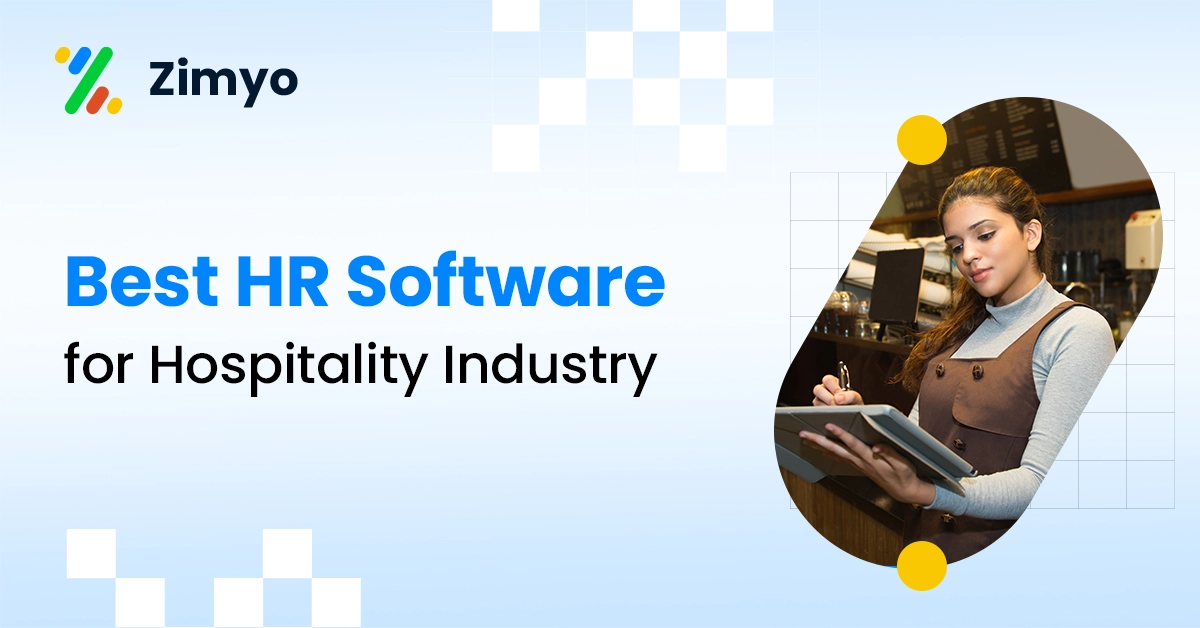- Are you sick and tired of manually logging employee attendance, arranging shifts by hand, and balancing compliance requirements for hours on end?
- Do you have trouble controlling labor expenditures while simplifying your workforce management procedures?
- Are you trying to find a way to improve productivity, increase corporate success, and streamline HR operations?
If you’re nodding to these questions, you’re in the right place. As HR managers, you are aware of the difficulties and complexities involved in overseeing a diverse workforce in the hectic corporate world of today. The responsibilities placed on HR professionals are a never-ending process, ranging from managing employee schedules to making sure labor regulations are followed.
But do not worry we are here for you as we’ll cover what you need to know about Labor Management Systems. So get ready to learn how the Labor management system can help you maximize effectiveness, boost output, and advance your HR operations. Now let’s get started!
What is the Labor Management System?

Before moving further let us understand what you actually mean by the Labor management system. The labor management system (LMS) is a software program created to automate and simplify a number of workforce management tasks, such as estimating labor costs, scheduling, tracking time and attendance, and performance monitoring.
This LMS functions act as a unified platform that helps organizations increase employee productivity, simplify operations, and effectively manage their human resources.
How Does the Labor Management System Work?
The labor management system integrates well with the existing HR system and is a primary method of gathering, processing, and analyzing workforce-related data. This is how it usually operates:
- Collection of Data: The LMS collects data manually or through the use of biometric scanners, employee time clocks, or other sources.
- Processing Data: Following collection, the data is analyzed to provide insights into productivity levels, work hours worked by employees, and other pertinent indicators.
- Analysis and Reporting: The LMS analyzes the processed data using analytics technologies to produce in-depth reports and dashboards. You can use these reports for employee allocation, employee scheduling, and performance review decisions.
- Automation: A lot of LMSs provide automation tools that make time-tracking, scheduling, and payroll processing easier. By decreasing manual errors, this automation gives you more time to devote to strategic tasks.
What are the Key Features of Labor Management System?

To have a good understanding of the labor management system it is equally important to know all the key features it has. Wide-ranging features and functions of labor management systems are designed to satisfy the various demands of all enterprises. Among the essential features frequently seen in LMS are:
1. Automation of Scheduling
By automating the procedure, LMS relieves the stress associated with scheduling. To create ideal timetables, complex algorithms take into account variables including employee availability, skill levels, labor regulations, and organization requirements. This reduces the possibility of overstaffing or understaffing by ensuring that the appropriate individuals are assigned to the appropriate shifts at the appropriate times.
2. Tracking the Time and Attendance
LMS can be used accurately to track time and attendance and get away with manual timesheets. Employees can use web portals, mobile apps, or biometric devices to electronically clock in and leave. You can get immediate access to information about employee attendance, breaks, overtime, and time-off requests as you get the complete real-time data.
3. Monitoring the Performance of Employees
HR managers can monitor individual and team performance indicators with the help of the powerful performance monitoring tools provided by LMS. These analytics assist in identifying high performers, areas for development, and training requirements based on productivity levels and attendance records.
On the basis of the objective data, prompt feedback and coaching may be given. This thus helps in promoting an environment of continuous improvement inside the organization.
4. Forecasting the Labor Cost
LMS has features to precisely calculate project labor costs by using labor force statistics, workforce patterns, and demand projections. Better resource allocation and budgeting are made possible by this, guaranteeing that businesses can satisfy their workforce demands without going over their budgetary limits.
5. Managing Compliances
Organizations have to maintain compliance with labor laws and regulations in order to avoid expensive fines and legal consequences. By handling employee leave entitlements, automating scheduling rules, tracking overtime, and guaranteeing constant adherence to labor laws, LMS assists HR managers in navigating the difficulties of compliance.
6. Employee Self-Service Portals
LMS provides self-service portals, so employees can easily manage their calendars and leave requests. Employees have access to their schedules, can seek time off, can switch shifts with coworkers, and can read pertinent information at any time and from any location.
This helps in increasing employee engagement and satisfaction and thus takes off some burden from your pile of administrative tasks.
7. Capabilities for Integration
The labor management system seamlessly integrates with other HR and workforce management software like Application tracking systems (ATS), payroll software, and human resource information systems (HRIS). This integration reduces errors in manual data entry, guarantees platform consistency of data, and speeds up HR activities in general.
8. Scalability and Customization
You know that each organization is different and thus their needs are also different. LMS acknowledges that and provides customization options to adapt the system to meet certain business requirements. Configuring scheduling rules, setting performance measures, or creating custom reports, LMS can provide you with information as per the changing needs of businesses across all sectors and sizes.
Furthermore, LMS is extremely scalable, allowing it to develop together with the organization and accommodate rising labor needs as it grows.
What are the Benefits of the Labor Management System?

For organizations trying to streamline their personnel management procedures and promote corporate performance, labor management systems provide a host of advantages. The following are some of the main benefits of LMS:
1. Enhanced Efficiency: HR managers can work more effectively by using LMS to automate tedious activities and streamline processes. This saves time and money that can be used for more strategic projects.
2. Increased Productivity: The features of the LMs like performance monitoring, feedback systems, and optimized scheduling ensure the best use of workforce resources, maximize employee productivity, and also minimize downtime.
3. Cost savings: Labor management systems (LMS) assist organizations in reducing labor costs and boosting profitability by accurately anticipating labor expenditures, lowering overtime spending, and ending time theft.
4. Adherence to Compliances: LMS makes sure that labor laws, rules, and corporate policies are followed. This lowers the possibility of fines, legal action, and reputational harm that can result from non-compliance.
5. More Effective Decision-Making: HR managers can see patterns, take proactive measures to solve workforce issues, and make well-informed decisions as they have access to real-time data, analytics, and reporting tools.
6. Improved Employee satisfaction: Employee morale is raised, retention rates are increased, and a healthy work atmosphere is promoted through self-service features, open communication, and equitable scheduling procedures.
7. Increased Scalability and Adaptability: LMS solutions possess exceptional scalability and adaptability, enabling them to seamlessly align with the changing requirements of enterprises, be it workforce expansion, market expansion, or adoption of new business models.
How is Labor Management System Important for HR?

HR managers play an important role in each organization to manage all workforce-related tasks including hiring, training, performance reviews, and pay. The LMS thus supports the HR managers by offering the capabilities and resources necessary to efficiently manage the workforce, maximize labor utilization, and guarantee adherence to labor rules and regulations.
The capacity of LMS to automate labor-intensive processes like scheduling and time tracking is one of the main reasons it is essential for HR. The LMS can create optimal schedules based on labor regulations, skill types, employee availability, workload requirements, and data analytics by utilizing advanced algorithms. In addition to saving HR specialists a great deal of time, this also reduces scheduling errors and guarantees that there is enough manpower to satisfy operational demands.
Additionally, the LMS makes it easier to track time and attendance accurately and transparently, giving HR departments the ability to keep tabs on worker attendance, keep track of hours worked, and efficiently handle overtime. Organizations can assure equitable compensation for employees, minimize payroll errors, and eradicate time theft by substituting traditional timesheets with digital timekeeping solutions.
The function that LMS plays in performance evaluation and monitoring is another important advantage for HR. HR managers can evaluate team and individual performance measures including attendance, productivity, and efficiency using built-in analytics and reporting tools. This makes it possible to provide prompt coaching, recognition, and feedback, which promotes employee engagement and an environment of continual improvement.
Additionally, the LMS aids HR managers in precisely projecting labor expenditures, which facilitates improved resource allocation and budgeting. Organizations can predict staffing needs, find cost-saving possibilities, and optimize labor expenses without sacrificing operational efficiency by examining historical data, workforce patterns, and demand forecasts.
Essentially, you can improve worker management, streamline procedures, and boost organizational performance with the help of an LMS.
Conclusion
Labor management systems are essential for helping organizations increase productivity, streamline their management procedures, and boost profitability. Organizations can simplify time and attendance recording, improve scheduling, boost production, and guarantee labor law compliance by utilizing the appropriate LMS system.
To make an informed choice that supports the aims and objectives of your organization, it’s critical to take into account aspects like scalability, user-friendliness, customization possibilities, vendor support, and security when choosing an LMS. Organizations can realize the full potential of their employees and achieve sustainable success in the competitive business environment by putting the correct LMS in place.
Looking at the features and benefits of the labor management system, you can surely decide to make an investment in it. One such software is Zimyo, which has all the core HR features to optimize your work and help you boost the productivity of your workforce. Leading employee management software, Zimyo, simplifies the hiring, onboarding, and retirement processes for all employees. Zimyo provides complete solutions for organizations of all sizes with 48 modules. Additionally, each module can be altered to meet the particular requirements of different types of enterprises.
Zimyo’s labor management solution has won multiple awards, including best ROI, momentum leader, high performer, and easiest to use. and numerous others from the G2 review platform. For labor management, Zimyo is trusted by some of the largest companies, like Sela, The Pet Shop, Petrochem, Udrive, Jeebly, Capital Motion, etc.






